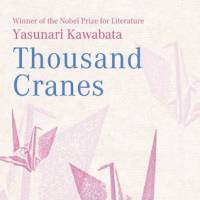Yasunari Kawabata's tense 1952 novel contains all the writer's hallmarks: beautiful language, obsessive sexuality and contempt for the era.
Thousand Cranes, by Yasunari Kawabata
Translated by Edward G.
Seidensticker
147 pages.
TUTTLE, Fiction.
Kikuji, the main character of "Thousand Cranes," is attracted to the mistress of his deceased father, but transfers his desires to her daughter. This morbid, faintly incestuous tale is set against social rituals and the finely crafted utensils of the tea ceremony — objects that acquire special significance as the story unfurls. Thus, a tea bowl owned by the husband of Kikuji's father's second mistress, passes into the hands of another former lover, who selects it to serve the son, and in the process the bowl becomes, at least symbolically, a poisoned chalice.
Kawabata's male characters have no time for women who have lost the first flush of youth, he portrays a privileged generation of men who could take a mistress, then, finding her diminished beauty an affront, reject her for a younger contender. The ugly and venal are juxtaposed throughout "Thousand Cranes" with images of beauty: "Rats were scurrying about in the hollow ceiling. A peach tree was in bloom near the verandah," he writes about the home of his father's mistress.
Ultimately, the novel is not a study of the power men wield over women, but a work suffused with loneliness and disorientation at the failure of art, literature and even the tea ceremony to create a more ideal world.
Read archived reviews of Japanese classics at jtimes.jp/essential.



